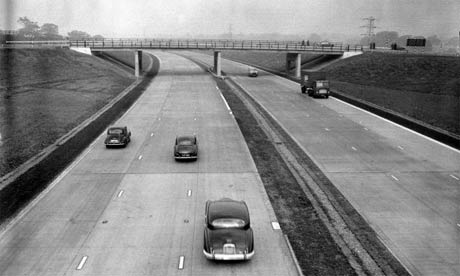A hundred years ago, my great-grandfather directed and starred in a silent film version of Humanity, based on his hugely successful stage show. Here he is looking suitably melodramatic

In 1915 he starred in The Monkeys Paw. This was the film version of a play he had produced in the West End that itself was an adaptation of a ghost story. In it, a poor middle-aged couple are given three wishes via the power of an ancient and sinister monkeys paw. They wish for £200. Their son is killed in a gruesome industrial accident at work and they are offered compensation – of £200. They wish for to him come back to them without thinking what that would actually mean...
I have no idea what my great-grandfather’s film is like or his stage show but I rather like the 1902 W.W Jacobs short story that they are based on. Its setting was modern for its time and there is a subtle undercurrent of social inequalities caused by the introduction of industrial technology – technology that is also the immediate cause of the son’s death. Mostly though, it is an effectively spooky ghost story that has antecedents in all manner of fairy tales. And like all good fairy tales, the message is: be careful what you wish for. Beware the unintended consequence.
In The Monkey’s Paw and similar fairy tales, attempting to control the future is seen as foolhardy. It taps into a number of human fears some of which are about making the wrong choices (and for the wrong reasons) and some are about what the future may hold.
 |
Fear of the future very often taints how we think about climate change. The issue is very often simplified into polarised opposites; the change is either happening or it’s not. And if it is happening – be afraid, we’re all going to burn! To put it another way, this climate-changed future is often presented as a single option that should be avoided or forestalled rather than a series of possibilities to be navigated.
However, even if you accept that the future is something to be navigated, how do we do that? In trying to answer that question, policymakers have to look into the future to what some of those possibilities might be and then create achievable goals that make sense for those possibilities. They have to imagine a viable future.
This sounds abstract and only really starts to make sense when it is made tangible - and tangible in a human, social and psychological context. Art and culture should be ideally placed to mediate this; to help imagine the future.
However, imagining-the-future, that is, prediction, in the arts is a relatively recent invention. Before William Morris’ 1890 News from Nowhere, most utopias (or dystopias) were set elsewhere or in the past rather than in the future.

This reluctance to engage in prediction in Western art and culture may be related to religion as attempting to know the future was often viewed as sinful or even of being in league with the devil. In any case, the predominant view (up until Darwin) was that life on earth is an inevitable journey to Judgement Day. Thus, there are artistic representations of the approved version of the future (e.g. the Apocalypse) but not much else. A slightly eccentric exception to this rule is Hubert Robert’s 1796 Imaginary View of the Grande Galerie in the Louvre in Ruins

Since 1890, there has of course been all manner of creative imaginings of the future. But, as has been said many times before, nothing is as old fashioned as yesterday’s future.

And how helpful are they? In the first Men in Black film, there’s a scene where Tommy Lee Jones talks about the alien technology that is about to become part of our future. He holds up a miniscule “mini-CD” saying this is going to be the basis for the next generation of music-playing systems. Of course being made in 1997 the makers of the film hadn’t foreseen the forthcoming digital revolution.
Like other “predictions” the Men in Black mini-CD example assumes that the future is an extension of the present whilst (understandably) not predicting the revolutions or events that genuinely change everything.
If policy is “imagining a viable future,” how do policymakers avoid the trap of imagining an “out-of-date future”? And how do they avoid the unintended consequence - the monkey paw effect.
In the 1950s and 1960s, the UK government had a roads policy known as “Predict and Provide.” As the name suggests, predicted car journeys were extrapolated from current numbers. Roads – particularly motorways - were then planned to provide “enough roads” for the predicted number of car journeys.

This policy was somewhat flawed.
It conflated a policy objective (the provision of “enough” roads) with the strategy for achieving that objective and didn’t consider the possibility that “enough” might become too many.
Even on its own terms it was flawed because car journeys were extrapolated from existing ones without realising that car ownership and the average car journey length were going to dramatically increase. More importantly it didn’t take into account that the creation of motorways made traveling easier - thus further increasing demand for roads; a sort of feedback loop. The strategy for achieving the (flawed) policy objective was itself flawed.
Like the makers of Men in Black, the policy-makers imagined that the future was an extension of the present and created a policy that wasn’t flexible enough to allow for unexpected change – such as the need for sustainable resource-usage that we face today. It didn’t imagine a viable future; it had an unintended monkey-paw consequence…
So much for macro-politics, what of cultural policy?
In my next post I will write about what news he was talking about; my involvement with it and what, (if any), difference it made to what was the future in 2007 - that is, today.
At least it’s my prediction that I will write that…
Postscript:
Most people know that when Harold Macmillan was asked what is the greatest challenge for a statesman, he replied “Events, dear boy, events.” What is less well known is that he went on to say “You make your mark as a statesman by your ability to control events.”
I like the sentiment it expresses, although I think “control” is a strong – dare I say, optimistic – word. Although, to be fair to Macmillan, I take him to mean in this context, “respond positively.” However it would be a brave politician who would say “I am not always able to control events, but I am able to respond positively.”
The use of “control” in this context is interesting; everyone likes to have a degree of control over their lives and a lack of it on a personal level can be deeply disempowering or worse.
Just after I started writing this post, Superstorm Sandy hit the East Coast of America and Mayor Bloomberg wrote “Our climate is changing. And while the increase in extreme weather we have experienced in New York City and around the world may or may not be the result of it, the risk that it might be – given this week’s devastation – should compel all elected leaders to take immediate action.”
Albeit briefly, mentioning climate-change was not seen as vote-loser.
What I find fascinating is that it has taken an “event” that represented an all-too-tangible vision of a future, uncontrollable on a personal level that led a call for “action;” for politicians to try to exert control.
I don’t think, as some do, that Sandy tipped the election; but for a while, the issue placed Romney and his team on the side of the Men in Black’s mini-CD. His vision of the future was based on an extension of the past. It did not accept that the unchecked use of fossil fuels is wishing on a monkeys paw. It did not accept that uncertainty, events and revolutions can change everything.
 |
| Copy of orginal published script from 1903 prodcution on my desk |
Great blog Ian, thankyou. Love the way you set out with your gt gt grandfather and end on Mayor of New York, Climate Change and Hurricane Sandy. Great stuff. Now you just have to make the feature film. Silent or sensaround?
ReplyDelete